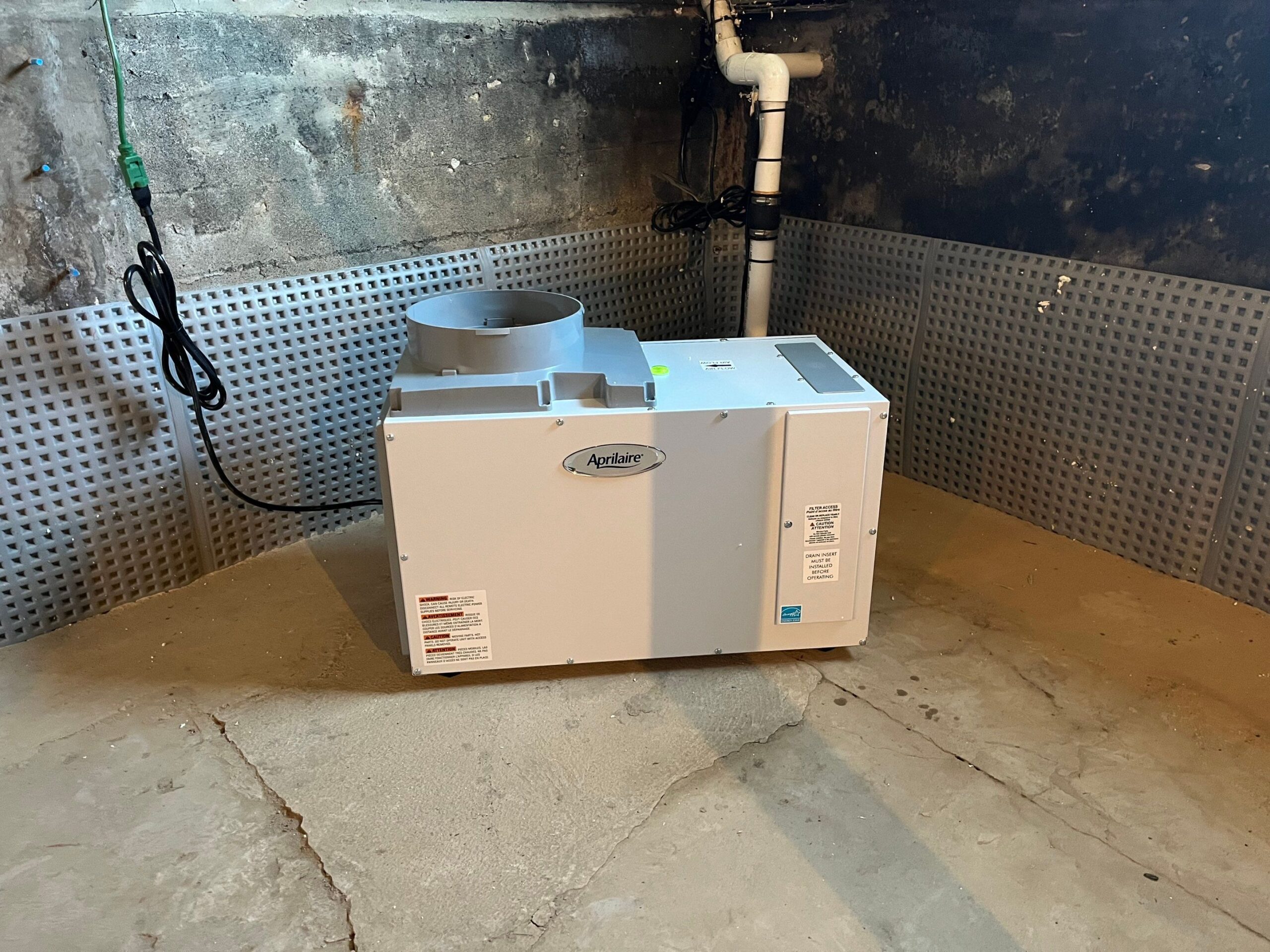Maintaining balanced humidity levels is essential for a healthy home. Too much moisture can lead to mold, odors, and structural damage. At the same time, too little can cause dryness, discomfort, and respiratory irritation. At Drycrete Waterproofing, we specialize in keeping your basement air just right. Our team provides expert installation, repair, and maintenance for high-performance basement dehumidifiers in Massachusetts and Rhode Island. Call today to schedule your free assessment.

Excess humidity doesn’t just make your home uncomfortable; it can seriously affect your health, property, and energy bills. The ideal indoor humidity level falls between 30% and 50%. When levels climb above that range, especially in basements, the consequences can quickly escalate:
Mold and mildew thrive in warm, damp areas with poor airflow, making basements a perfect environment. These fungi don’t just damage surfaces, they also pose real health risks. A quality dehumidifier helps control moisture levels, reducing the chance of dangerous growth.
Wood framing, furniture, flooring, and drywall absorb moisture over time, leading to warping, swelling, and even rot. High humidity can also cause paint to blister, wallpaper to peel, and finishes to degrade, damaging your home from the inside out.
Dust mites, termites, cockroaches, and other pests are drawn to moisture. A humid basement provides the perfect breeding ground, putting your home at risk of structural damage and contamination.
That telltale musty basement smell? It’s often a sign of lingering moisture and mold growth. A dehumidifier helps eliminate that damp, stale air and keeps your basement smelling clean.
Humidity makes it harder for your HVAC system to regulate temperature. That extra workload drives up energy use, increases wear and tear on your system, and can result in higher utility bills.
Both basement and portable dehumidifiers are designed to reduce moisture levels, but they differ in performance, coverage, and convenience. Understanding the differences can help you choose the right solution for your home.
Basement dehumidifiers are built for large, moisture-prone areas. They have a much higher capacity than portable models and can maintain stable humidity levels across an entire basement. Portable dehumidifiers are best suited for smaller rooms or spot control.
Basement dehumidifiers are typically installed as permanent systems, either standalone or integrated into an HVAC setup. They must be installed level, with proper drainage. Portable units are plug-and-play devices you can move from room to room, requiring little more than a nearby outlet.
Once installed, basement dehumidifiers are low-maintenance. Most models connect directly to a sump pump, French drain, or condensate pump for automatic drainage. Systems like AprilAire include long-lasting filters that only need cleaning twice a year. Portable dehumidifiers usually have a tank that must be emptied manually, unless equipped with a hose for continuous drainage.
Basement dehumidifiers cost more upfront, but they deliver long-term value. This is especially true in homes with chronic humidity issues. They offer whole-area coverage and long-lasting components, making them more efficient and cost-effective over time. Portable units are less expensive, but may fall short in larger or heavily damp spaces.
Drycrete Waterproofing provides more than just dehumidifier installation. Our team offers full support for your system to ensure lasting performance and reliable moisture control:
On-Site Assessment
We’ll evaluate your basement or crawl space to determine the right dehumidifier size, placement, and drainage solution for your needs.
Ongoing Maintenance
Keep your system running efficiently with filter checks, cleaning, and performance tune-ups.
Repairs
Whether it’s a faulty sensor, clogged drain, or power issue, we service and repair all major dehumidifier brands.
Condensate Pump Installation
For basements without gravity drainage, we can install a condensate pump to safely direct water to your sump pump or drain system.
The right humidity levels can make a big difference in your home’s air quality, comfort, and structural safety. A professionally installed basement dehumidifier helps prevent mold, mildew, and excess moisture, giving you cleaner air and greater peace of mind.
If you’re dealing with high humidity in your Massachusetts or Rhode Island home, call Drycrete Waterproofing today to schedule your free on-site assessment.
5.0
Over 800 reviews